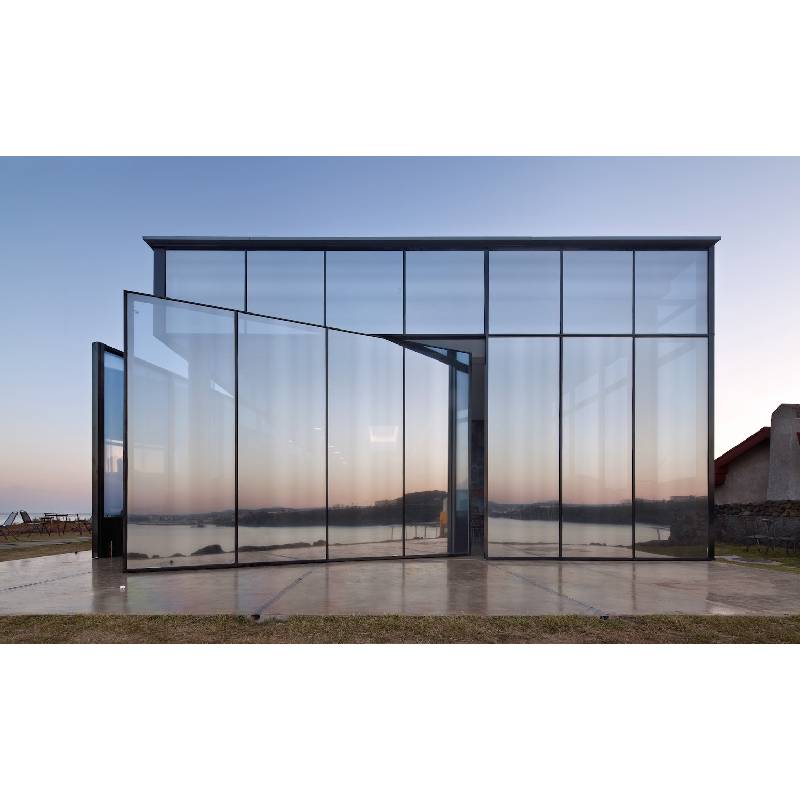

Understanding Float Glass Tempered Properties and ApplicationsFloat glass, a product of the float glass process, is a type of glass that is formed by floating molten glass on top of molten tin. This method produces a sheet of glass with optical clarity and smooth surface finish—qualities that make it ideal for various applications. However, the inherent characteristics of standard float glass, such as its susceptibility to breakage, have led to the development of tempered float glass, which enhances its durability and safety.Tempering is a heat process that involves heating the float glass to a temperature of around 620 to 650 degrees Celsius (1148 to 1202 degrees Fahrenheit) and then rapidly cooling it. This process induces internal stresses within the glass, making it significantly stronger than regular float glass. The resulting tempered glass is about five to ten times more resistant to breakage, thermal changes, and impact. As such, tempered float glass has become a preferred material in various industries, including architecture, automotive, and household applications.One of the key benefits of tempered float glass is its safety feature. When broken, tempered glass shatters into small, blunt pieces rather than sharp shards, reducing the risk of injury. This characteristic is particularly important in environments where safety is a priority, such as in building facades, glass doors, and shower enclosures. Furthermore, tempered glass can be produced in various thicknesses and sizes, providing versatility for architects and designers to incorporate it into their projects.In the architectural domain, tempered float glass is widely utilized for curtain walls, windows, and skylights. Its ability to withstand significant temperature fluctuations makes it suitable for both exterior and interior applications. Moreover, the glass can be coated or tinted for enhanced aesthetic appeal and energy efficiency. With the increasing emphasis on sustainable building practices, using tempered glass can contribute to the overall energy efficiency of a building due to its excellent insulation properties.In the automotive industry, tempered glass is used in car windows and windshields. The toughened nature of the glass allows it to withstand high impact and pressure, ensuring passenger safety. Additionally, the glass's optical clarity is essential for visibility and driving safety.Beyond construction and automotive, tempered float glass finds its way into household items such as coffee tables, oven doors, and cooktops. The aesthetic appeal combined with its strength and safety features make it an attractive choice for furniture designers.In conclusion, float glass tempered offers significant advantages over standard float glass, primarily its enhanced strength, safety, and versatility. Whether used in architecture, automotive, or everyday household applications, it plays a critical role in modern design and functionality. As technology advances, the applications for tempered glass are likely to expand, further solidifying its importance in various industries. This means a brighter, safer, and more visually appealing future powered by the unique properties of float glass tempered.

Understanding Float Glass Tempered Properties and ApplicationsFloat glass, a product of the float glass process, is a type of glass that is formed by floating molten glass on top of molten tin. This method produces a sheet of glass with optical clarity and smooth surface finish—qualities that make it ideal for various applications. However, the inherent characteristics of standard float glass, such as its susceptibility to breakage, have led to the development of tempered float glass, which enhances its durability and safety.Tempering is a heat process that involves heating the float glass to a temperature of around 620 to 650 degrees Celsius (1148 to 1202 degrees Fahrenheit) and then rapidly cooling it. This process induces internal stresses within the glass, making it significantly stronger than regular float glass. The resulting tempered glass is about five to ten times more resistant to breakage, thermal changes, and impact. As such, tempered float glass has become a preferred material in various industries, including architecture, automotive, and household applications.One of the key benefits of tempered float glass is its safety feature. When broken, tempered glass shatters into small, blunt pieces rather than sharp shards, reducing the risk of injury. This characteristic is particularly important in environments where safety is a priority, such as in building facades, glass doors, and shower enclosures. Furthermore, tempered glass can be produced in various thicknesses and sizes, providing versatility for architects and designers to incorporate it into their projects.In the architectural domain, tempered float glass is widely utilized for curtain walls, windows, and skylights. Its ability to withstand significant temperature fluctuations makes it suitable for both exterior and interior applications. Moreover, the glass can be coated or tinted for enhanced aesthetic appeal and energy efficiency. With the increasing emphasis on sustainable building practices, using tempered glass can contribute to the overall energy efficiency of a building due to its excellent insulation properties.In the automotive industry, tempered glass is used in car windows and windshields. The toughened nature of the glass allows it to withstand high impact and pressure, ensuring passenger safety. Additionally, the glass's optical clarity is essential for visibility and driving safety.Beyond construction and automotive, tempered float glass finds its way into household items such as coffee tables, oven doors, and cooktops. The aesthetic appeal combined with its strength and safety features make it an attractive choice for furniture designers.In conclusion, float glass tempered offers significant advantages over standard float glass, primarily its enhanced strength, safety, and versatility. Whether used in architecture, automotive, or everyday household applications, it plays a critical role in modern design and functionality. As technology advances, the applications for tempered glass are likely to expand, further solidifying its importance in various industries. This means a brighter, safer, and more visually appealing future powered by the unique properties of float glass tempered.